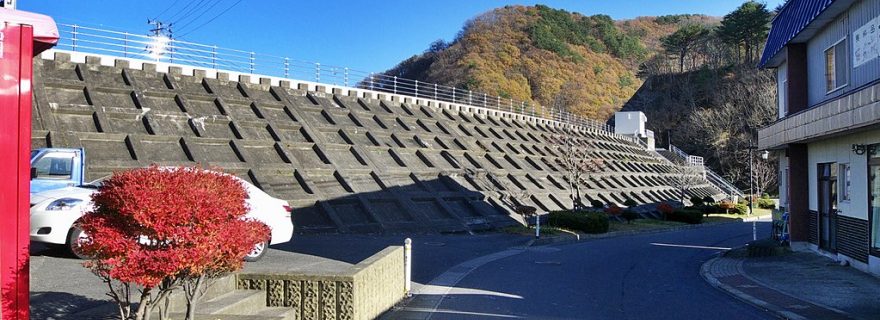The Price of Safety: Understanding Anti-Seawall Sentiment in Post-Tsunami Japan
In the aftermath of Japan’s 2011 earthquake and tsunami, local governments have sought to mitigate future risk through the construction of seawalls. The people they are supposed to protect, however, have often resisted these efforts. Why?
Since the 1990s, a consensus has developed in the humanistic social sciences that the term “natural disaster” is a misnomer. Disasters are not “great equalizers”: they require a population in a position of socially produced vulnerability. Catastrophe, then, serves to dispossess the already marginalized by stripping them of what few assets they have. But what if attempts to prevent or mitigate disaster, to protect people and their assets, could also dispossess them, however unintentionally? What if the tendency to treat political problems – issues of competing norms and values – if they were strictly technical questions could, in the post-disaster context, deprive them of something fundamental to recovery: their ability, as David Harvey puts it, to shape themselves by shaping their environment?
Minamisanriku
Since 2012, I’ve been exploring these issues in and around a Japanese town called Minamisanriku. Located in a stretch of Pacific Coastline called the Sanriku Coast, Minamisanriku is home to many families of near-shore fishermen and aquaculturists who make their living raising seaweed, scallops, oysters, and silver salmon. On March 11, 2011, the region was struck by an earthquake and tsunami most famous for precipitating meltdowns at three nuclear reactors. While Minamisanriku was unaffected by radiation, 831 residents – 5% of the pre-disaster population – died. 3,143 homes were also destroyed, accounting for 60% of all residences. For the survivors, many of who were elderly, speedily rebuilding was itself a matter of life and death. “We don’t want to die in temporary housing,” as one told me.
"Reconstruction paradox"
Reconstruction, however, has taken longer than expected. The more ambitious an area’s projects, the more people left; a phenomenon Nagamatsu Shingo, Professor of Societal Safety Sciences at Kansai University, has dubbed the “reconstruction paradox”. People would not, or could not, wait to rebuild their lives. Some delays were intrinsic to the projects themselves: carving new residential areas out of mountains takes time. But rebuilding was also impeded by pushback from residents. Among the most controversial policies was the building of new seawalls to mitigate future tsunamis, the tallest of which reached 15m in height. These should make the coastline safer, but they were challenged by many of the people they were supposed to protect. I wanted to find out why.
A barrier between land and sea
The imposition of a barrier between land and sea, I found, does not simply keep out external hazards: it threatens the ecology of the coast, and thus the fishing industry, by impeding the flow of organisms from the land to the shallows. The walls also affect the phenomenal experience of fishermen, whose knowledge of their craft is inseparable from their ability to monitor the daily moods and tempers (the unadara, or “face”) of the sea: from the color of the waters, the quality of the clouds, and the strength and direction of the wind, they make decisions daily about fishing strategies, as the anthropologist Shuhei Kimura describes. For people intimate with both the fertility and severity of the ocean, the ability to see it is also central to the feeling of safety: many feared that dependence on seawalls would, paradoxically, produce complacency. The perceived failure of previous walls during the tsunami (challenged by some scholars) reinforced these fears, prompting many residents to question hard disaster protection.
A sense of place
Lastly, but by no means least, I found that the plans threatened people’s sense of place and place-based identities. After the tsunami, little trace of the former town remains. The seawalls, whose bases can reach tens of meters in width, would shrink or remove what little is left. This included the places people had lived and worked; the harbors where they fished; and the recreational sites such as beaches, popular with tourists and locals alike, that made their areas distinct. The walls threatened, in other words, damage not only to tourist income, but also local identities. “All we have here is the sea,” one older lady said to me. “Without it, nobody would think much of this place.”
Value judgments
For my informants, mitigating the worst of these effects meant recovering a sense of agency in deciding reconstruction policy. From the location of seawalls to the placement of residential estates to the number and location of new roads, they engaged in many struggles with officials over the future shape of their areas. This is the politics of reconstruction: the fight to define what, and whose, values should shape the re-engineering of Northeast Japan. There is no one answer, only tradeoffs of varying degrees. But seen from this perspective, rebuilding is not, and can never be a strictly technical or bureaucratic process: it always involves value judgments. By building seawalls, officials prioritized physical safety over other values, such as ecosystem conservation, maintaining sight lines, and preserving traditional modes of land and sea use. The walls might protect people’s lives, but they come with a cost for identities and livelihoods: things “without which,” one local ecologist told me, “it doesn’t matter if one lives.”



0 Comments
Add a comment